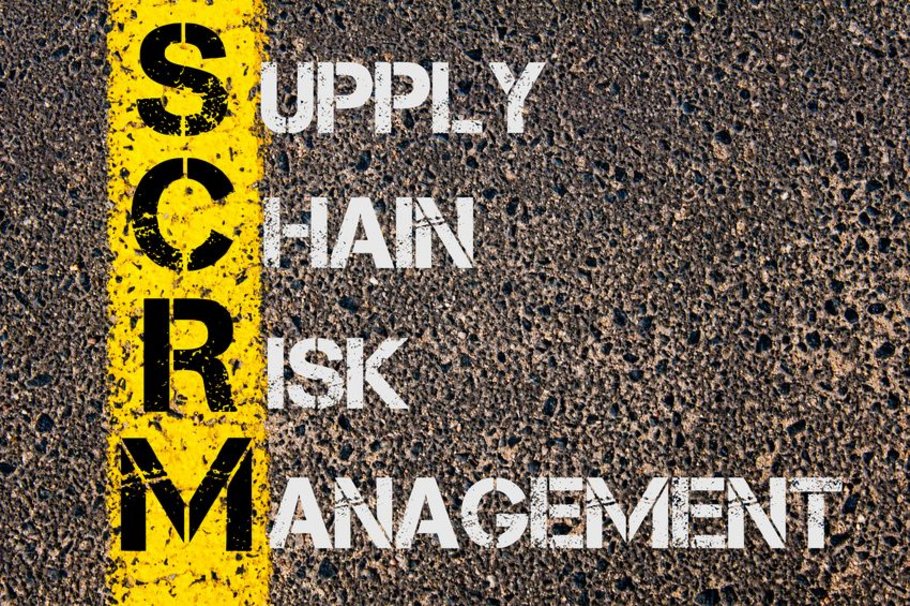If one takes a broad view of wargaming, it is probably one of the oldest simulation methods in existence. The Chinese game of "Wei-Hai" (meaning "encircling") is frequently cited as one of the earliest wargames [cf. Oriesek/Schwarz/Oliver 2009, p. 10]. This ancient game was developed some 5000 years ago by the great Chinese general, military strategist and philosopher Sūnzǐ.
Sūnzǐ was involved in a number of military campaigns, one of which was a battle in the kingdom of Chu in which he reportedly prevailed, with just 30,000 soldiers, against an opposing army ten times larger. In his classic work The Art of War, the great general wrote: "If you know the enemy and know yourself, you need not fear the result of a hundred battles. If you know yourself but not the enemy, for every victory gained you will also suffer a defeat. If you know neither the enemy nor yourself, you will succumb in every battle. Supreme excellence consists of breaking the enemy's resistance without fighting." [cf. Sun Tsu 1989]. The following text will demonstrate that wargaming can also be an efficient tool for the analysis of risks, such as strategic and operational risks.
Business wargames are generally also referred to as "conflict simulations" (or for short, "consim"). And in essence, this is indeed what wargaming is: the simulation of conflicts which may be potential or even current scenarios.
The origins of wargaming, and the key developments which shaped it, date back to the first such conflict games for actual battlefield purposes. [The discussion which follows is substantially based upon Romeike/Spitzner 2013, p. 134 ff.] In the seventeenth and eighteenth centuries, these games began to take on a far more realistic char-acter, so as to provide better training to military commanders. The objectives of training in this way were to better prepare commanding officers for unexpected developments in the course of military engagements, and to avoid erroneous decisions and thus the losses resulting from these ("downside risks"). The use of such wargaming methods played no small role in the rise of Prussia, among others, as a great European military power. It was supposedly a Prussian officer, Georg Heinrich Rudolf Johann von Reisswitz, and later General Gerhard Johann David von Scharnhorst, who first developed "Kriegsspiel" into a training method for Prussian officers, then later used it also to develop military strategies and tactics. It was not only in Prussia that these wargames came into prominence, but also in great nations around the world – for example, in France, Great Britain, Italy, Russia, the United States and Japan [cf. Oriesek/Schwarz 2009, pp. 13-19]. Their application was not limited to the military sphere; political issues of the day, and later also economic themes, were examined with the aid of wargames.
In simple terms, a wargame (and likewise a business wargame) involves the simulation of a conflict situation in which several players take part. Each of the players assumes the perspective and behaviour of one of the relevant stakeholders in the situation which is to be simulated, then receives a mission objective for the game which is, or would very likely be, consistent with the objectives of the stakeholder being played. In the round-based play which follows, the players then try to achieve their respective mission objectives. Thus, there is a certain similarity or even overlap between wargames and role-playing games (with wargames involving multiple players), scenario analysis (in which a particular situation is examined under defined environmental conditions) or planning games (which, for example, may be employed as a learning method for recognising relationships).
The course of play is fundamentally impossible to predict, as it is largely determined by the actions and reactions of the different players. It is this particular characteristic of a wargame, however, which lends itself to post-game analysis, enabling new understandings of the mechanisms of actions and reactions in the situation which was played – provided, of course, that the players were realistic in interpreting their roles. Thus, the focus of a wargame lies not only in the gameplay and in winning but, even more importantly, in the subsequent analysis of players' moves and strategies, which is the subject of joint discussion among the players. Although players must play the game with a compelling desire to win, which is necessary to analyse and recognise the dynamics of the conflict and the patterns of relationships between actions and reactions, winning the wargame is, in fact, not the primary objective of wargaming.
An illustration of wargame methodology
The usefulness of wargaming in business scenarios will first be illustrated through the example of a quantitative wargame, in which a European company wishes to prepare for its entry into the Asian market using a wargame simulation. Specifically, the European exporter wishes to take share in a new market which until now has been dominated by a domestic producer. To play this out as a wargame, the first step is to develop roles in the game which reflect the relevant market participants. In addition to the European company, designated in our wargame scenario as "Us", these are primarily the dominant market leader in the local market, the "Top Dog", as well as the customers in this target market. Because the European company is not planning to initiate local production at this point, there is no need to model, for example, suppliers. The target market is, however, highly regulated. To reflect this, one of the teams takes on the role of the regulator, designated in the wargame as the "Authority". The authors found, in addition, that good results were often achieved through the inclusion of an additional team assuming the role of a creative competitor, "Mr. X". The role of this player is, first and foremost, to mix up the market through the introduction of unconventional ideas. The last of the game participants is the game master, who not only acts as referee to ensure that the rules of the game are followed and also, under certain circumstances, intervenes in the game play.
Simulating this scenario as a wargame can help answer some key questions: "What are the (upside) opportunities and (downside) risks which result from our chosen strategy? How must our market positioning, market segmentation, market strategy and product strategy be adjusted? What is the optimal pricing strategy? Given this new market dynamic, what is the optimal, or at least a sensible, path of expansion?"
The wargame is then played out in multiple rounds. The task of the respective teams is, in each round of play, to make business decisions in the context of the current market situation – which could have to do, for example, with pricing, quality, service conditions, risk taking, and so forth. The specific decisions to be taken depend upon the issues which are to be examined through the wargame and, in turn, how the wargame is designed. Once all of the teams have completed their decisions for the round, these are consolidated in a market model so that the results of the round can be calculated. The game then moves into the next round of play, with a new market situation. In regular intervals, which can be following each round of play or after a certain number of rounds, the moves (decisions) taken by each of teams are disclosed, along with the underlying strategies of the individual stakeholders, so that these can be jointly discussed. In this way, all of the game participants can gain new insights into the market mechanisms at work as well as the risks associated with different courses of action, which is indeed the ultimately objective of wargaming. A schematic outline of the game methodology is presented in Figure 01.
![Figure 01: Methodology of a business wargame [Source: Weber/Spitzner/Stoffels 2008, p. 64] Figure 01: Methodology of a business wargame [Source: Weber/Spitzner/Stoffels 2008, p. 64]](/fileadmin/_processed_/b/6/csm_Abb-01_Business-Wargaming_20150408_765766e462.jpg)
Figure 01: Methodology of a business wargame [Source: Weber/Spitzner/Stoffels 2008, p. 64]
The difference between a quantitative wargame, as described above, and a purely qualitative wargame is that in the latter case, the new situation at the start of the next round of play is not calculated by a model but rather emerges from discussion among the participating stakeholder teams. Thus, the schematic diagram in Figure 01 must simply be adjusted to replace "Calculation of results", i.e. through simulation, with "Agreement on results through joint discussion". The challenge which often arises here is, of course, in reaching this common agreement. Should consensus not be reached on the results of a round, it could be that the teams have not sufficiently explained their moves (decisions), or that the discussion must be taken further to reach a shared basis of understanding among the stakeholder teams.
One of the unique features of wargaming as a simulation technique is its playful character. In addition to being "just a game", however, wargaming uniquely allows the participants to bring their emotions and instincts into their actions and reactions, and to experience the consequences of their decisions in a very intense and personal way. This intensity, moreover, generally leads to a strong identification with the role being played, which is reflected in the quality of the simulation results. Compared to other methods of simulation, this personal intensity of play and of experiencing market reactions is quite unique to wargaming.
Typical applications
An essential characteristic of any wargame is that it involves the participation and interaction of multiple players who have differing interests (for example, playing the roles of risk manager, sales manager or project manager). If one wishes to see how these different interests, or those of the company, play out and interact in the scenario, this can only be achieved if the players strive to take a proactive, forward-looking view and anticipate potential situations before they actually arise. If one does not want to be taken completely by surprise by the actions of opponents, it is vital to have a firm grasp of the mechanisms of interaction and of the possible patterns of action and reaction.
A wide variety of business decisions fall into this kind of framework and thus can potentially be developed into a scenario to which wargaming techniques can be applied. These are particularly suited to situations where reactions do not lend themselves to deterministic prediction but rather where the actions and reactions of the individual players are driven by cognitive behaviour, psychological effects and even irrational thinking. Such situations frequently involve, for example, the balancing of opportunities against risks. Wargaming methods may also be successfully applied where there is a lack of market experience, or where an entirely new type of action is under consideration, such as a new product or a new type of contractual arrangement. Beyond this general characterisation, some typical situations which may be suitable applications for wargaming techniques are as follows [Romeike/Spitzner, p. 139]:
- Analysis of competitor, customer and supplier behaviour: Where there is a lack of clarity about the ways in which other stakeholders are likely to behave, and the reasons therefore, a wargame simulation can help, for example, in the identification of risks. Of particular value here is the joint discussion and analysis, as part of the wargaming methodology, of the strategies and actions of the individual players during each round of play. Through this process, a understanding can be built up in the course of the entire game about the likely actions and behaviours of the various stakeholders, thus also bringing greater transparency to the risks which are likely to be faced.
- New product introductions, market entry scenarios, or development of new businesses: In these kinds of situations, the company is generally entering entirely new territory and thus has little or no past experience to draw upon. With the help of a wargame simulation, the company can, for example, test its entry into a new market, shedding light upon the kinds of reactions which established competitors might take to defend their market positions, and exposing potential risks. Using the insights gamed from wargaming, the company can make adjustments to its entry strategy and optimise it to deal with expected counteractions.
- Impact of changes in market environment: Where the environmental conditions in a market are altered – for example, through new laws or regulatory actions – this may trigger changes in the competitive practices and behaviours of market participants. Such situations are frequently associated with a phase in which new models are tested in the market until such time as market practices and expectations once again become established. Through the use of wargaming techniques, this transition phase can be simulated in advance, thus providing a strategic advantage relative to other market participants.
- Simulation of negotiations: A negotiation will only come to a successful conclusion when the negotiating parties believe that they have at least partly achieved their original objectives and that they have not suffered a loss of face through the objectives they have sacrificed in the course of the negotiation process. The specific outcome of the negotiation, however, is the result of negotiating skill as well as the tactics employed. Wargaming methods offer the opportunity to simulate these negotiations before they even begin, to identify the risks which may arise, and to lay out the negotiating tactics most likely to produce the desired outcome.
Challenges in practical application
Because a wargame takes a number of different stakeholders into account, this method of simulation is, by its nature, correspondingly complex in scope. In order to extract the enormous benefits which this methodology offers compared to other approaches, despite its inherent complexity, it is essential to very clearly define and delineate the issue which is to be addressed, and to put considerable thought and effort into properly preparing the wargame. In any application of wargaming methods, the following aspects should therefore be carefully considered [for deeper discussions, see Oriesek/Schwarz 2009, pp. 171-173; Weber/Spitzner/Stoffels 2008, pp. 63-66, and Romeike/ Spitzner 2013, p. 140 f.]:
- Made-to-measure wargames: In wargaming, battles are quite literally won and lost because of clarity about, and focus on, the issue under examination. In no case should the simulation attempt to address multiple issues at the same time. Rather, success is most likely to be achieved by constructing a wargame scenario which has the least possible complexity while still capturing all of the salient elements and factors, so that the analysis, discussions and insights which emerge from the wargame can subsequently be translated into the real-world situation in a way which is useful and relevant.
- Selection of game participants: A wargame depends critically upon participants who can play their stakeholder roles as realistically as possible while at the same time drawing on their own experiences and expertise. Ideally, these roles would be played by teams of people with a mix of different backgrounds and experiences. Careful should likewise be taken to develop a friendly sense of rivalry among the teams, where there is a mutual acceptance amongst all wargame participants. Finally, the game participants should have an interest in the subject issue, an openness to the wargaming approach, a creative mindset, and some degree of playful competitiveness.
- Preparation of players or stakeholder teams: For the participants in a wargame to act and respond as closely as possible to how the stakeholder being played would do so in reality, they must be thoroughly prepared for their roles. It is therefore recommended, before the wargame play begins, to prepare participants for their roles through personal interviews in which they are introduced to the issue that is to be examined, led through the objectives and rules of the wargame, and attuned to the specific roles which they will be playing. Should a situation arise where an individual participant has difficulty in identifying with the role which is to be assigned, remedial actions can still be taken before gameplay begins.
- Well-structured gameplay: In the wargaming workshop, "role cards" are handed out to each of the stakeholder teams, including background information on the specific role which is to be played as well as the individual game mission, formulated for maximum clarity. The gameplay which begins at this point should be designed so that it is intense and engaging, but not overwhelming. The game master, who may be assisted by a team of moderators, should act to supervise and support the individual stakeholder teams, so that they may focus their full attention on the actual roles which they are to play. So that the players remain engaged and challenged at the right level throughout the entire course of the game – neither overwhelmed at the start, nor bored as they gain confidence – it is recommended to gradually increase the complexity of the game over time, such as by introducing potential new available player actions in subsequent rounds of play, or through interventions by the game master, such as the imposition of unexpected events or exogenous shocks.
| Benefits | Limitations |
|---|---|
| By simulating the various stakeholders, a deeper understanding is gained of their actions and reactions. The round-based gameplay draws out patterns of cognitive behaviour, so that these can be examined, while tending to reduce irrational modes of behaviour. Risks become more transparent. | The results of wargames are fundamentally not reproducible. The outcome depends rather on the behaviours and interactions of the players, which may be quite spontaneous. |
| Wargaming enables the dynamics of decision-making and change processes to be identified and understood, along with one's own strategic gaps, so that risks can be anticipated and actions taken proactively rather than reactively. | The short timeframe in which a decision must be taken may not be sufficient for wargaming simulation, which generally requires considerable time to design the specific game scenario, to prepare the participants and to carry out gameplay with the level of scenario depiction and interaction among the stakeholders which the complexity of the situation demands. |
| In addition to deepening understanding of mechanisms of action and reaction, wargames frequently generate new ideas for further optimising strategies. Likewise, risks can be better anticipated and preventively managed. | The results of a wargame are, in most cases, only a tool for anticipating likely future directions or trends. Even where wargaming is supported with sophisticated software, any quantitative results are highly uncertain. |
Table 01: Benefits and limitations of wargaming [Source: Romeike/Spitzner 2013]
Conclusions
Business wargaming combines elements of creative, scenario-based and simulation-based methodologies; it is an evolved form of scenariobased simulation which also draws in the unique features and interaction patterns of multi-player gameplay. Its key benefits and limitations are summarised in Table 01. By simulating the interactions among various stakeholders, a deeper understanding is gained of their actions and reactions, providing greater clarity as to patterns of cognitive behaviour while tending to minimise, through sequential rounds of gameplay, irrational modes of behaviour. This enables the identification of risks which do not lend themselves to traditional methods of analysis. This analysis can be further refined through the application of "cognitive heuristics": For example, if an event appears representative of a large underlying total population (the "representativeness heuristic"), or if people find it easy to imagine the event or to recall a recent similar event (the "availability heuristic"), then there is a bias to overestimate its probability [cf. Gleissner/Romeike 2012].
Awareness of one's own weaknesses and biases in understanding risks is a first step towards reaching one's potential to better manage risks. In this context, business wargaming can add value. Consider the wisdom in these words from U.S. economist and Nobel laureate Thomas Crombie Schelling: "The one thing you cannot do, no matter how rigorous your analysis or heroic your imagination, is to make a list of things you never thought of." Through the creative process which it enables, perhaps business wargaming can put us a big step forward in this direction.
Reference literature
- Andlinger, Gerhard R. [1958]: Business Games – Play One!, in: Harvard Business Review 36, no. 2, pp. 115-125.
- Andlinger, Gerhard R. [1958]: Looking Around: What Can Business Games Do?, in: Harvard Business Review 36, No. 4, pp. 147-152.
- Gleissner, Werner/Romeike, Frank [2012]: Psychologische Aspekte im Risikomanagement – Bauchmenschen, Herzmenschen und Kopfmenschen [Psychological aspects in risk management: People who act on gut feel, on emotion and on rationality], in: Risk, Compliance & Audit (RC&A), 06/2012, pp. 43-46.
- Meyer, Matthias/Romeike, Frank/Spitzner, Jan [2012]: Simulationen in der Unternehmenssteuerung; empirische Studie in Zusammenarbeit von TU Hamburg-Harburg, RiskNET und C21 Consulting [Simulations in corporate management: Empirical study conducted jointly by TU Hamburg-Harburg, RiskNET and C21 Consulting], RiskNET GmbH, Brannenburg 2012.
- Oriesek, Daniel F./Schwarz, Jan Oliver [2009]: Business Wargaming. Unternehmenswert schaffen und schützen [Business wargaming: Creating and protecting company value], Gabler Verlag, Wiesbaden 2009.
- Romeike, Frank/Hager, Peter [2013]: Erfolgsfaktor Risiko-Management 3.0. Methoden, Beispiele, Checklisten. Praxisbuch für Industrie und Handel [Success factors for risk management 3.0: Methods, examples, check lists. A practical handbook for industry and trade], Springer Gabler Verlag, Wiesbaden 2013.
- Romeike, Frank/Spitzner, Jan [2013]. Von Szenarioanalyse bis Wargaming – Betriebswirtschaftliche Simulationen im Praxiseinsatz [From scenario analysis to wargaming: Business simulations applied in practice], Wiley Verlag, Weinheim 2013.
- Sun Tsu [1989]: Über die Kriegskunst (übersetzt und kommentiert von Klaus Leipnitz) [The Art of War (translated and commentated by Klaus Leipnitz)], Info Verlag, Karlsruhe 1989.
- Weber, Jürgen/Spitzner, Jan/Stoffels, Mario [2008]: Erfolgreich steuern mit Market Intelligence. Marktentscheidungen fundiert treffen [Successfully managing with market intelligence: Making sound market decisions], Wiley Verlag, Weinheim 2008.
- Weber, Jürgen/Kandel, Olaf/Spitzner, Jan/Vinkemeier, Rainer [2005]: Unternehmenssteuerung mit Szenarien und Simulationen. Wie erfolgreiche Unternehmenslenker von der Zukunft lernen [Corporate management with scenarios and simulations: How successful executives learn from the future], Wiley Verlag, Weinheim 2005.
Author:Frank Romeike, Managing Partner, RiskNET GmbH; Member of the Executive Board, Society for Risk Management and Regulation; Editor-in-Chief of RISIKO MANAGER magazine





